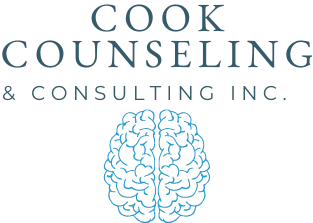Depression is a complex illness characterized by a web of emotional, physical, and cognitive
symptoms. Among these, anhedonia – the loss of interest or pleasure in activities once enjoyed –
stands out as particularly stubborn to treatment. Unlike low mood or fatigue, anhedonia directly
impacts the ability to experience joy, leaving individuals feeling emotionally numb and disconnected
from life’s simple pleasures.
The Core of Motivation
Why is anhedonia so challenging to address? Our brains reward us with dopamine, a neurotransmitter when we engage in activities we find enjoyable. This positive reinforcement system motivates us to repeat those behaviors, shaping our experiences and desires.
Depression, however, disrupts this delicate balance. Studies suggest a possible decrease in dopamine activity, leading to a diminished capacity to experience pleasure. Activities that once brought joy may now feel bland or meaningless, creating a vicious cycle. Without the motivation to engage in rewarding experiences, the anhedonic cycle perpetuates, leaving individuals feeling stuck in a state of emotional flatness.
Treatment Challenges
Traditional antidepressants, while effective in addressing symptoms like sadness and anxiety, often fall short in tackling anhedonia. They address the emotional symptoms but might not directly impact the reward system. Therapy approaches like cognitive behavioral therapy (CBT) can help individuals identify and challenge negative thought patterns that contribute to anhedonic feelings. However, for those deeply entrenched in anhedonia, even these strategies might prove insufficient.
Emerging Possibilities
Fortunately, research continues to explore new avenues to address treatment-resistant anhedonia. Here are some promising areas:
Dopamine Agonists: These medications, while not without side effects, can directly target the reward system by mimicking dopamine’s effects and potentially enhance feelings of pleasure.
Neuromodulation Techniques: Transcranial magnetic stimulation (TMS) and deep brain stimulation (DBS) are non-invasive techniques that show promise in targeting specific brain regions associated with the reward system.
Mindfulness-Based Interventions: Cultivating a mindful approach can help individuals appreciate present-moment experiences, potentially fostering a sense of engagement and enjoyment in everyday activities.
Empowering Yourself
Although challenging, overcoming anhedonia is possible. By understanding the underlying mechanisms at play and exploring the emerging treatment options, there’s reason for hope. Remember, depression with anhedonia is a treatable condition. With the proper support and continued research, individuals can reclaim their ability to experience joy and find meaning in life.
If you struggle with anhedonia, here are some steps you can take:
Seek professional help: Talk to a doctor or therapist who specializes in depression treatment.
Be patient: Overcoming anhedonia takes time and consistent effort.
Focus on small goals: Start with activities that require minimal effort and gradually build on your successes.
Connect with loved ones: Social support is crucial in navigating the challenges of depression.
References:
Cooper, J. A., Arulpragasam, A. R., & Treadway, M. T. (2018). Anhedonia in depression: Biological mechanisms and computational models. Current Opinion in Behavioral Sciences, 22, 128-135. https://doi.org/10.1016/j.cobeha.2018.01.024
George, M. S. (2013). The Expanding Evidence Base for rTMS Treatment of Depression. Current Opinion in Psychiatry, 26(1), 13–18. https://www.ncbi.nlm.nih.gov/pmc/articles/PMC4214363/

